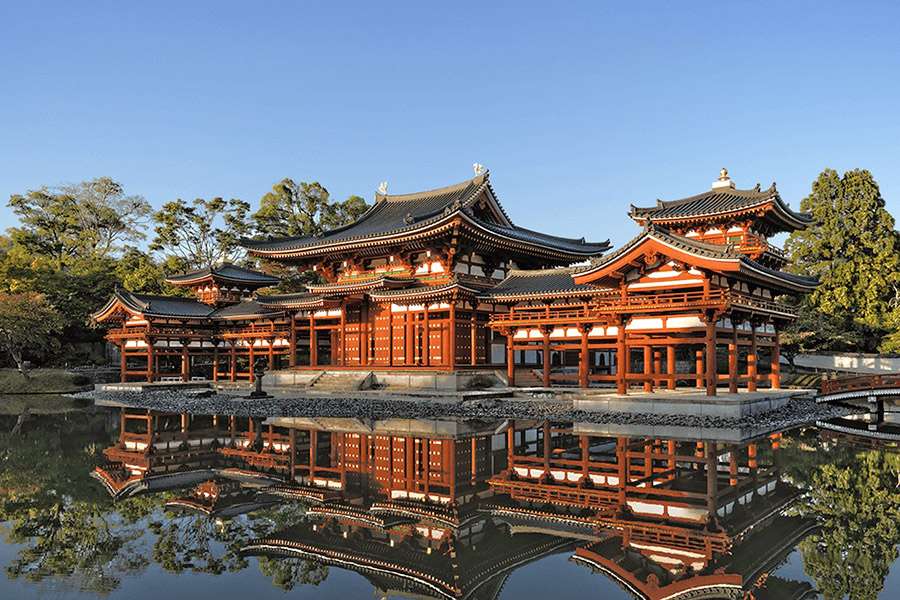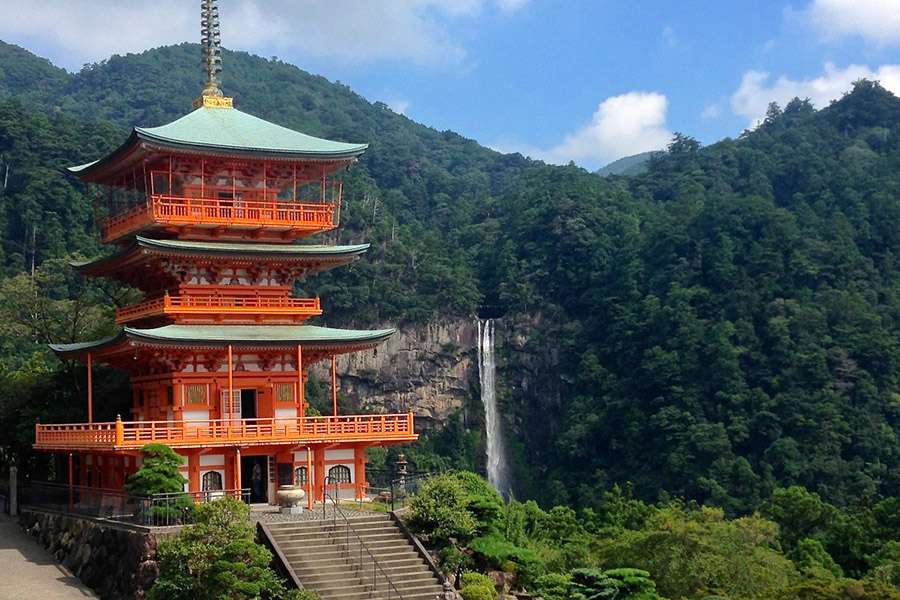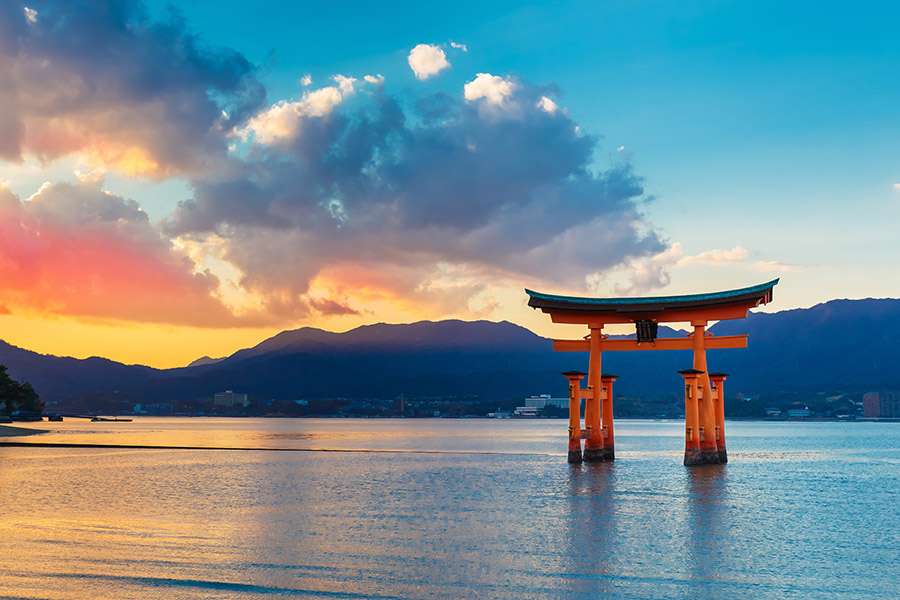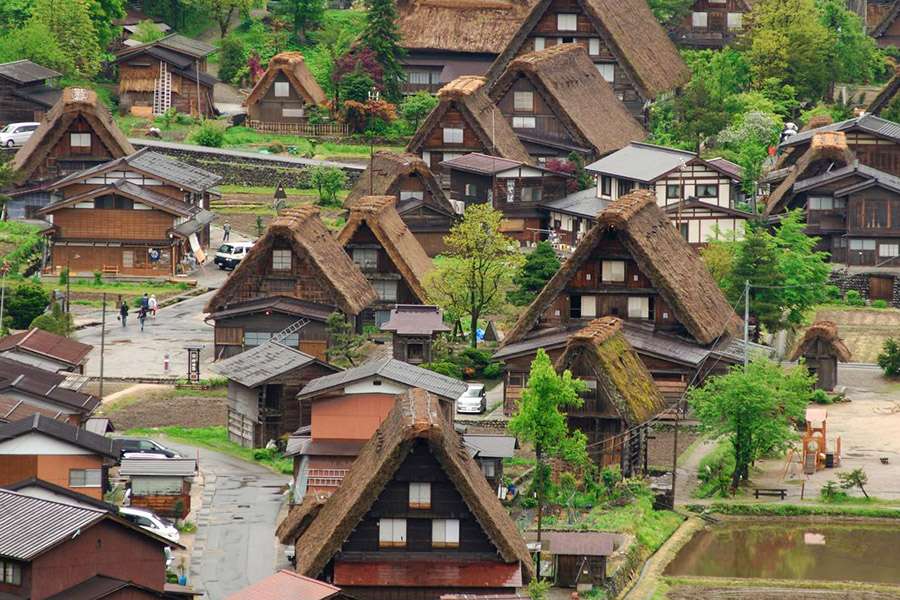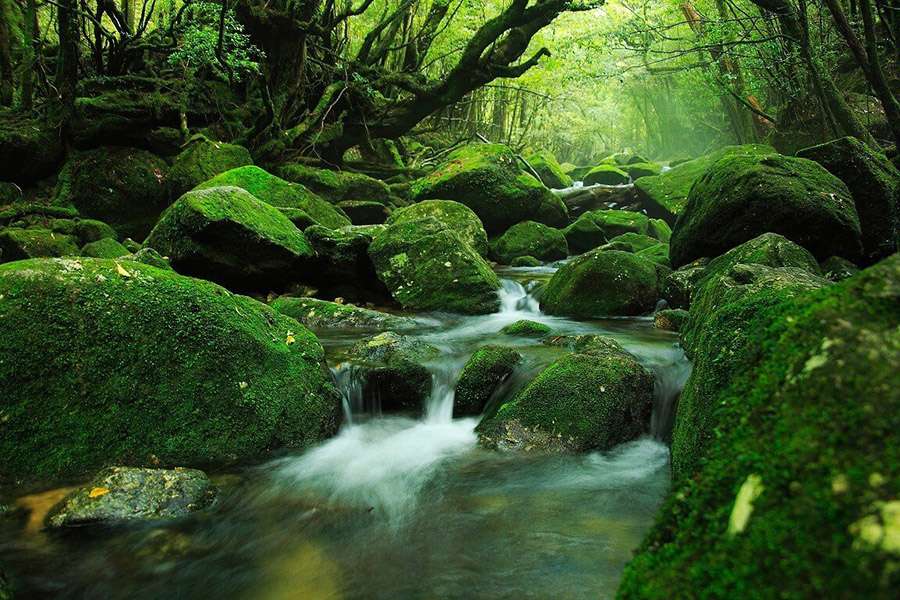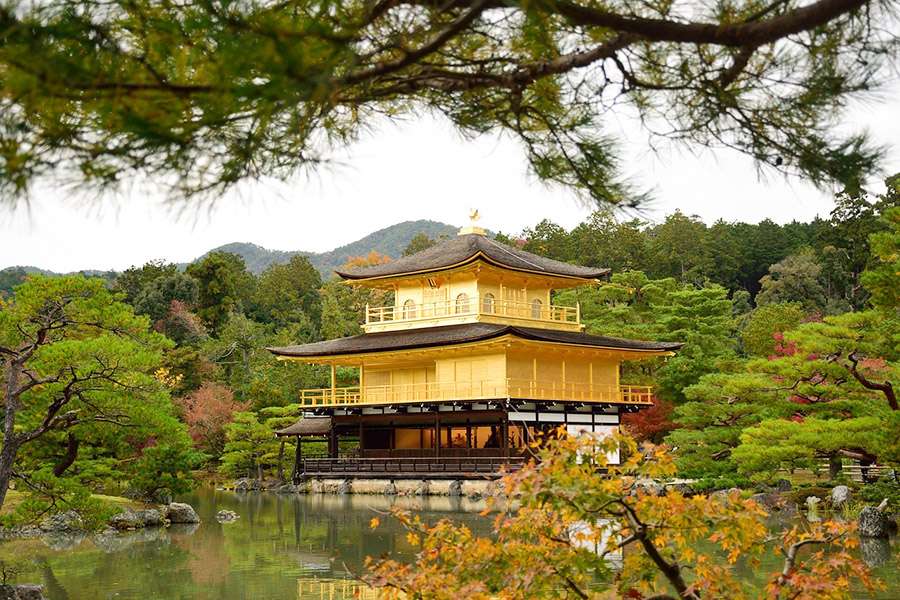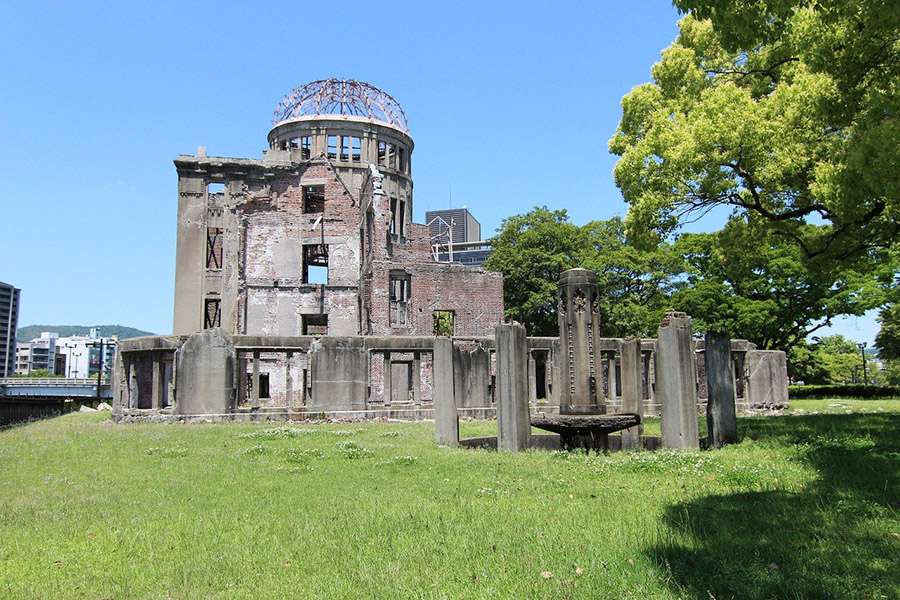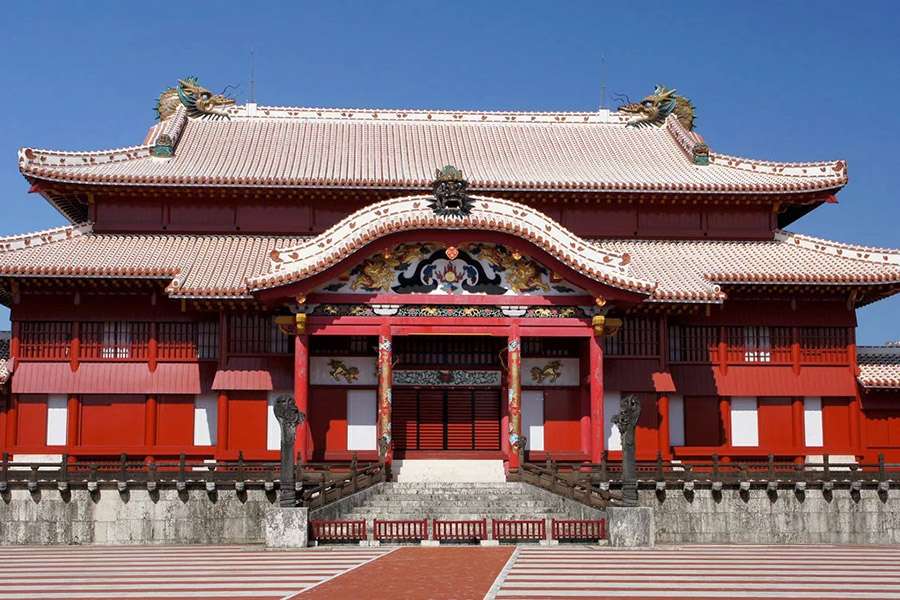From Okinawa to Kyoto and Mount Fuji, the world heritage sites in Japan offer a captivating glimpse into the nation’s rich cultural and natural legacy. Japan is renowned for its stunning sightseeing spots, including serene bamboo forests, vibrant summer festivals, and charming traditional villages. Given that many of Japan's historic sites have suffered damage from natural disasters and wars, the ones that have endured are especially cherished.
Top UNESCO World Heritage Sites in Japan
The top UNESCO World Heritage Sites in Japan showcase the country’s profound blend of history, culture, and nature. These top 8 globally recognized landmarks not only preserve Japan’s heritage but also inspire awe, reflection, and a deeper appreciation for its enduring beauty.
Spiritual Sites and Pilgrimage Paths in the Kii Mountain Range
The Kii Mountain Range, one of two pilgrimage routes recognized by UNESCO, is home to three sacred sites: Yoshino and Omine, Kumano Sanzan, and Koyasan. The area's verdant landscapes offer excellent hiking opportunities and a lingering sense of tranquility tied to ancient Shinto and Buddhist nature worship.
The pilgrimage routes here, known collectively as Kumano Kodo, follow the paths used by pilgrims of the past. A particularly popular trail leads to Nachi Taisha, where the striking vermillion pagoda and the 133-meter Nachi no Taki waterfall provide a picturesque reward for your hike. These sacred pilgrimage routes are among the most revered world heritage sites in Japan, offering both spiritual significance and natural beauty.
Itsukushima Shinto Shrine on Miyajima Island
Known as the second most famous landmark in Japan after Mt Fuji, the Itsukushima Shrine is famous for its impressive vermillion torii gate that seems to float on the water off the coast of Miyajima Island. Just a short ferry ride from Hiroshima, many travelers book Hiroshima shore excursions to visit the Itsukushima Shrine and surrounding sites. At low tide, visitors can walk right up to the massive gate.
This shrine is a beautiful example of Shinto architecture, designed to harmonize with its natural surroundings. Miyajima is also home to a population of friendly deer, more relaxed than the bowing deer in Nara, along with scenic hiking trails and delicious momiji-shaped sweets. Itsukushima Shrine is one of the iconic world heritage sites in Japan, attracting travelers on Hiroshima shore excursions.
Ancient Villages of Shirakawa-go and Gokayama
Resembling something out of a fairytale, the gassho-zukuri houses of Shirakawa-go and Gokayama are awe-inspiring even to the most experienced travelers. Tucked away in the mountains and surrounded by rice fields, these secluded farmhouses are preserved for their ingenious design, with steep, prayer-hands-like roofs. This distinctive architecture helps to keep the homes warm in winter and cool in summer.
Many of the houses are open to visitors, offering Shimizu shore tours that highlight traditional village life, while some have been converted into guesthouses and restaurants. The ancient villages of Shirakawa-go and Gokayama are celebrated as unique world heritage sites in Japan, showcasing traditional architecture.
Yakushima - One of World Heritage Sites in Japan
This small island off the coast of Kyushu is home to an ancient cedar forest with hiking trails winding through its untouched natural beauty. Scattered across the island are yakusugi, exceptionally old cedar trees. Deep within the forest lies Jomonsugi, estimated to be between 2,000 and 7,000 years old, making it the oldest tree in Japan and endowing it with deep spiritual significance.
The most popular hiking route is Shiratani Unsuikyo, which is said to have inspired Studio Ghibli’s 'Princess Mononoke.' This well-maintained trail is suitable for beginners, and if you're lucky, you might even spot a forest spirit or two.
Historic Monuments of Ancient Kyoto (Kyoto, Uji and Otsu)
Kyoto is a must-visit on any Japan itinerary, and for good reason. This spiritual city is rich with temples and shrines that evoke a traditional Japan that contrasts sharply with the bustling atmosphere of Tokyo. On Kyoto shore excursions, you’ll find iconic landmarks like the Golden Pavilion at Kinkakuji Temple and the serene Zen rock garden at Ryoan-ji Temple.
It’s also worthwhile to explore the neighboring cities of Uji and Otsu for a more tranquil experience with nature and traditional architecture. Uji, known for Byodoin Temple, the image featured on the back of the ¥10 coin, offers a peaceful retreat, especially in spring or autumn when cherry blossoms and red maple leaves enhance its beauty. Don’t miss a visit to a local teahouse, where Uji’s famous green tea is featured in dishes like soba noodles and ice cream.
Otsu, located on the shores of Lake Biwa in Shiga Prefecture, is rich with spiritual and historical significance. It is said that Murasaki Shikibu composed ‘The Tale of Genji’ while staying at Ishiyama-dera, a prominent temple in the city. Be sure to visit Enryakuji Temple as well, once the base of a renowned sect of Buddhist warrior monks.
Hiroshima Peace Memorial (Genbaku Dome)
The Genbaku Dome in Hiroshima stands as a poignant symbol of Japan’s history. On August 6, 1945, Hiroshima was devastated by the world’s first atomic bomb, which flattened everything in its vicinity. Remarkably, the Genbaku Dome withstood the explosion, and the city chose to preserve it as a memorial to the victims and a reminder of the catastrophic effects of war and nuclear weapons.
The surrounding Peace Memorial Park includes sculptures and origami cranes commemorating the thousands who lost their lives. The Peace Memorial Museum, also a significant site, is a place for reflection—bring tissues for the visit.
Mt. Fuji - A Sacred Site and Artistic Inspiration
Mt. Fuji, a sacred mountain and artistic inspiration, is one of the most renowned world heritage sites in Japan. The mountain has been a profound source of inspiration for artists, including Hokusai, whose renowned ukiyo-e print ‘The Great Wave Off Kanagawa’ features Mt. Fuji prominently. Recognized by UNESCO for its artistic significance, Mt. Fuji has captivated generations.
In addition to its artistic allure, Mt. Fuji is spiritually significant. Buddhist pilgrims have traditionally visited Sengen-jinja shrines and climbed the mountain to honor the Shinto deity Asama no Okami, believed to have resided in its crater. While climbing is possible during the summer, most hikers begin their journey from the fifth station, located halfway up the mountain.
Gusuku Sites & Associated Historical Properties of the Ryukyu Kingdom
The Gusuku Sites are significant sacred and historical landmarks from the Ryukyu Kingdom, now known as Okinawa. These UNESCO sites preserve the history of the Ryukyu Kingdom from the 12th to the 17th centuries and include nine key monuments, with four located in Naha.
Among these, Shuri Castle is the most renowned but was severely damaged by fire in 2019. Despite this, visitors on Okinawa shore excursions can still explore the ongoing reconstruction and other nearby UNESCO sites, such as the Sonohyan-utaki stone gate. To the south of the castle, the Shikina-en gardens, once part of the royal residence, are celebrated for their blend of traditional Japanese and Chinese styles. History enthusiasts should not miss the Tamaudun royal mausoleum, which houses the remains of the Ryukyu royal family.
Tips for Travelers Visiting World Heritage Sites in Japan
Japan’s World Heritage Sites are more than just tourist attractions, they are living testaments to the country’s rich cultural heritage and deep respect for nature. To make the most of your journey, here are some practical tips for travelers visiting World Heritage Sites in Japan.
- Research before you go: Understanding the history and significance of each site like Himeji Castle or Shirakawa-go can enrich your experience and help you appreciate its value.
- Visit during off-peak hours or seasons: Many UNESCO World Heritage Sites in Japan can get crowded during cherry blossom season or weekends. Aim to visit early in the morning or on weekdays for a more peaceful atmosphere.
- Respect local customs and etiquette: Most sites, especially temples and shrines, are active religious spaces. Speak quietly, bow respectfully, remove your shoes when required, and avoid restricted areas for photos.
- Wear comfortable footwear and appropriate clothing: Sites like Nikko or Mount Fuji involve lots of walking or climbing. Comfortable shoes and layered clothing are essential for a stress-free visit.
- Be environmentally responsible: Help preserve natural World Heritage Sites in Japan such as Yakushima by staying on marked trails, avoiding littering, and not disturbing local wildlife.
- Consider hiring a local guide: Local guides offer deep insights and stories that bring these heritage sites to life. They can also help you discover hidden gems and lesser-known features of each location.
- Be patient and stay present: Take time to enjoy the moment whether it’s the quiet beauty of a moss-covered temple or the breeze through a bamboo grove. Don’t rush and let the site reveal its story to you.
- Check site-specific rules: Some heritage sites have unique visiting hours, seasonal closures, or limited daily entry. Always check the official website before your visit for the latest updates.
- Support local communities: Eat at local restaurants, buy traditional crafts, or stay in a family-run ryokan. Your support helps maintain the areas surrounding these treasured World Heritage Sites in Japan.
For an enriching exploration of Japan’s cultural legacy, Japan Shore Excursions offers excellent opportunities to visit these historic landmarks.

